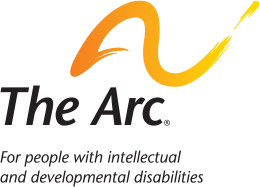Part Two of a Three-Part Series
By Laurie Hanson, Esq., Special Needs Alliance
There are an estimated 600,000-700,000 adults with intellectual and developmental disabilities (I/DD) in the United States who are living with aging family members and with no plan in place for their future. With the launch of the Center for Future Planning, The Arc is shining a spotlight on the need to encourage and support families to create person-centered future plans. The Center provides practical assistance and resources on future planning items such as expressing wishes for the future, supporting daily and major life decisions, and financing the future.
Below, our colleagues from the Special Needs Alliance emphasize the importance of planning and trusts.
In the first installment to our series, we discussed third party special needs trusts (SNT), also known as supplemental needs trusts, currently the best vehicles available to provide for a family member living with a disability after the parents’ death. In order to use this vehicle, parents need to understand how a trust works, how to tailor it to fit the specific needs of their family member, and how much money should be placed into the trust. Consider the following example:
| Gary Smith wants Trusted Community Bank to manage his money after his death for the benefit of his daughter, Beth Smith, who is living with Down syndrome. Beth lives in a group home. Her support services are paid by a Medicaid waiver, and her room and board is paid from her Supplemental Security Income (SSI) benefit. Gary does not want the money he provides to impact Beth’s SSI or her Medicaid waiver, and he has very specific ways he wants the money to be used for her benefit. Gary is single and has three other children. |
What is a trust? A trust is an instrument to manage money. A trust is established by written agreement between the person who funds the trust (the grantor) and the person or financial institution responsible for managing the money in the trust (the trustee) for the benefit of a person called the “beneficiary.”
What is a third party special needs trust? A special needs trust (SNT) is a trust established to provide for the well-being and needs of a person living with a disability. As long as the trust is established and administered correctly, neither the property in the trust nor the distributions from the trust should jeopardize the beneficiary’s Supplemental Security Income (SSI) or Medicaid. A third party SNT is a trust funded with money that does not belong to the person with a disability. In the example above, Gary (the grantor) can establish an SNT, then place his assets in the trust to be managed and administered for Beth’s benefit. He would give instructions in the trust agreement as to how the money should be used for Beth’s benefit and what happens to the money following Beth’s death.
Who should serve as trustee? Choose the trustee carefully. Often it’s advisable to select a professional or bank with experience managing special needs trusts. It is important that the trustee be familiar with complex government regulations, which change frequently. While a family member could serve as trustee, the individual should be skilled at paperwork and accounting, and able to work well with the beneficiary. Sometimes it is better to leave trust administration to the professionals. This is an issue to discuss with an attorney before making a decision.
What property is controlled by the trust? Only money or property legally given to the trust is controlled by the trust. If property is not titled in the name of the trust, it is not controlled or protected by the trust.
- A home can be titled in the name of the trust.
- Gary could make the trust the beneficiary of his IRA or other retirement accounts, his life insurance, or CDs and savings bonds.
- Gary could leave money and property to the trust in his will.
- A bank account can be opened to place money in a checking or savings account in the name of the trust.
How much money should be placed in a third party SNT? This depends upon the beneficiary with I/DD! Parents should work with a financial planner to make projections based on the family member’s living expenses, income, public benefits, caregivers, etc. For instance, say that Gary wants someone to visit Beth as often as he does – twice a week. In addition, every Friday he makes arrangements for someone (sometimes him) to go to dinner and a movie with Beth. This allows him and other people in Beth’s life to see her in her home and assess how she is doing. He very much wants this to continue following his death. He will have to project the cost of providing this service over Beth’s life expectancy to determine how much money should be placed in the trust.
What is a third party pooled SNT? A third party pooled SNT is a master trust established by a non-profit corporation to hold a third party’s assets for the benefit of a person with a disability. A parent will sign a joinder agreement to set up a sub-account within the pooled trust for the benefit of his or her family member. The funds in the sub-account are pooled with funds of other accounts for investment purposes only, but a separate sub-account is maintained for each beneficiary. Money in a sub-account of a properly established pooled trust will not jeopardize a beneficiary’s Medicaid and/or SSI benefits.
Why use a pooled trust? Pooled trust sub-accounts are most beneficial when the amount in the trust will not be enough to justify the expense of a corporate trustee (such as a trust company or a bank). Also, the trustee of the pooled trust is professional and often has special knowledge about persons with disabilities. Pooled trusts should be expected to remain up-to-date on changing laws and regulations affecting federal benefits and their relationship to trusts. Many chapters of The Arc, for instance, have established pooled trusts for families and others to use. Some pooled trusts are run by chapters and others are independent non-profit organizations.
Why not “disinherit” a family member with a disability and rely on the siblings to care for him/her? This is very risky – siblings could move away, die, or become ill themselves. Some of them just decide to use the money for themselves. And in a divorce, the sibling’s spouse may be entitled to some of the funds intended for the person with I/DD. If that happens, the person with the disability could be left unprotected.
What happens if there is money left in the third party trust or pooled trust sub-account when the beneficiary dies? The grantor states in the third party SNT agreement what he or she wants to have happen. In this case, Gary could state that at Beth’s death, any funds left in the trust should be distributed to his other three children, his grandchildren, or a charity. In a pooled trust sub-account, the language of the pooled trust master agreement will often specify that a certain percentage remain with the master trust at the death of the beneficiaries before distribution to other remainder beneficiaries. Pooled trusts vary on this, so families should check this detail.
Third Party SNTs can be complicated and state requirements vary, so families should work with professionals who are experienced with the nuances of changing government regulations. But the effort pays dividends, and can ensure a more secure future for a loved one.
The Special Needs Alliance (SNA) is a national non-profit comprised of attorneys who assist individuals with special needs, their families and the professionals who serve them. SNA is partnering with The Arc to provide educational resources, build public awareness, and advocate for policies on behalf of people with intellectual/developmental disabilities and their families. This article does not constitute legal advice and individuals should consult legal counsel concerning their specific situations.











